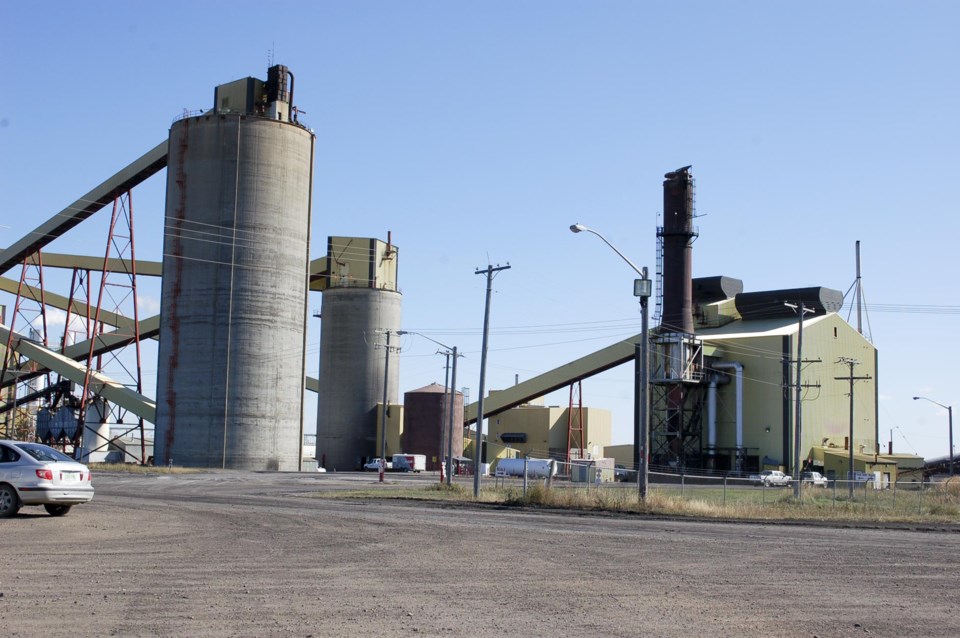Activated carbon processes got a little public exposure last Thursday afternoon, raising the profile for a local $70 million project that would otherwise pretty well go unnoticed by the general public.
The principal players in the activated carbon plant located at Sherritt Coal's Prairie Mines and Royalty mine site near Bienfait were on site to officially launch the program.
The technology is not groundbreaking, but it's significant for the coal-burning energy industry as it moves forward into a new environmental world order.
The process introduced at the Bienfait mine will reduce most of the mercury emissions from flue gas at coal-fired power plants. Activated carbon is stimulated by steam in order to combat the effects of mercury contamination in water systems.
Coal-fired electricity generation is the largest industry affected by new regulations coming aboard in Canada and since coal has long been viewed as the efficient and cost-effective way of safely producing power, the environmental upgrades are seen as necessary and welcomed, according to the likes of Mark Plamondon, senior vice-president of Sherritt's coal division who was on hand for the launch and Ron Thompson, chief executive officer of Norit Activated Carbon, Sherritt's partner in the venture.
Plamondon made his way to Estevan from Sherritt's corporate headquarters in Edmonton while Thompson ventured out from Marshall, Texas to participate in the opening.
The design team of Tom York and Jason Leeper of Applied Control Technology of Texarkana, Texas were also on hand for the luncheon celebration that took place in an event tent that was pitched right next door to the Bienfait mine's office and maintenance quarters. About 70 invited guests also heard from Estevan MLA Doreen Eagles and Bienfait plant manager Sheldon Buck who served as emcee for the occasion. Tours of the mine were offered later that afternoon.
"This is another example of value-added activity and a different course for coal," said Eagles, noting that the Bienfait mine itself had a proud history that dated back more than 100 years.
Plamondon noted that in March of 2009, The Mercury bore the information that the project was underway and now, a little more than two years later, it was completed and fully operational.
"We're excited with this joint effort with a procedure that will reduce mercury emissions. As regulations get more stringent, we saw this as a good opportunity and time to partner up with Norit and do it," Plamondon said.
"Our environmental stewardship is excellent and progressive. This is a product for cleaner air and the new process provides 28 more direct jobs and this is another use for Bienfait coal," he added. "We are excited about this project and we thank Norit for getting it off the ground and we look forward to the future."
Thompson, along with York and Leeper, noted that the only differences they experienced in putting the plan and plant together in southern Saskatchewan compared with similar projects in the southern United States was the need to adjust for and accommodate colder winter climates. They built this system indoors as opposed to others that could be built outside.
"The processes can be slightly different from BTU (British thermal unit) standards, one project to another," said York, noting that mercury removal is also a major improvement for water treatment. He said that while Applied Control's engineers were directing some aspects of the project, local labour was used for construction.
"This is a good niche market for us," York said.
"As we put it together, we realized we had a pretty successful team," said Thompson who noted that lignite coal is a near perfect product for mercury control and that was something that came to his company's attention years ago.
"Activated coal is vital to coal-fired plants. We're here to make it cleaner and this will be the first of many for Bienfait," said Thompson who said similar plants in Texas and in Holland are proving to be successful in their mandate.
Later Plamondon told The Mercury that there is sufficient demand and supply margin to make the project cost-effective and activated coal was, by far, the best method to eliminate mercury emissions. With new federal environmental controls expected by the summer of 2015, he said this was a perfect time to move in the direction of this new regulatory regime.
"The technology and process is there and market demand will move the next project forward," Plamondon predicted.
Thompson said Norit moved to partner with Sherritt since they saw it "as a No. 1 company for partnership. They are the leaders and as we looked to expand, we saw them as the ones to hook up with to get there. They have a quality of people that are the best in the coal industry.
Norit's sales and technology are implemented here, we reap benefits later," he said, commenting on the future costs and investment strategies.
"This process has a business model that makes sense. We had the technology, we needed the local expertise and we got it with them," Thompson added with a southern drawl.
"Our biggest challenge really was getting those southern engineers to build in a northern climate. We knew the technology would work."
The partnership is on a 50-50 basis with an annual capacity of about 15,000 short tons with Norit providing the marketing and sales activities and Sherritt's Prairie Mines and Royalty plant being the exclusive operator and supplier of the coal.



